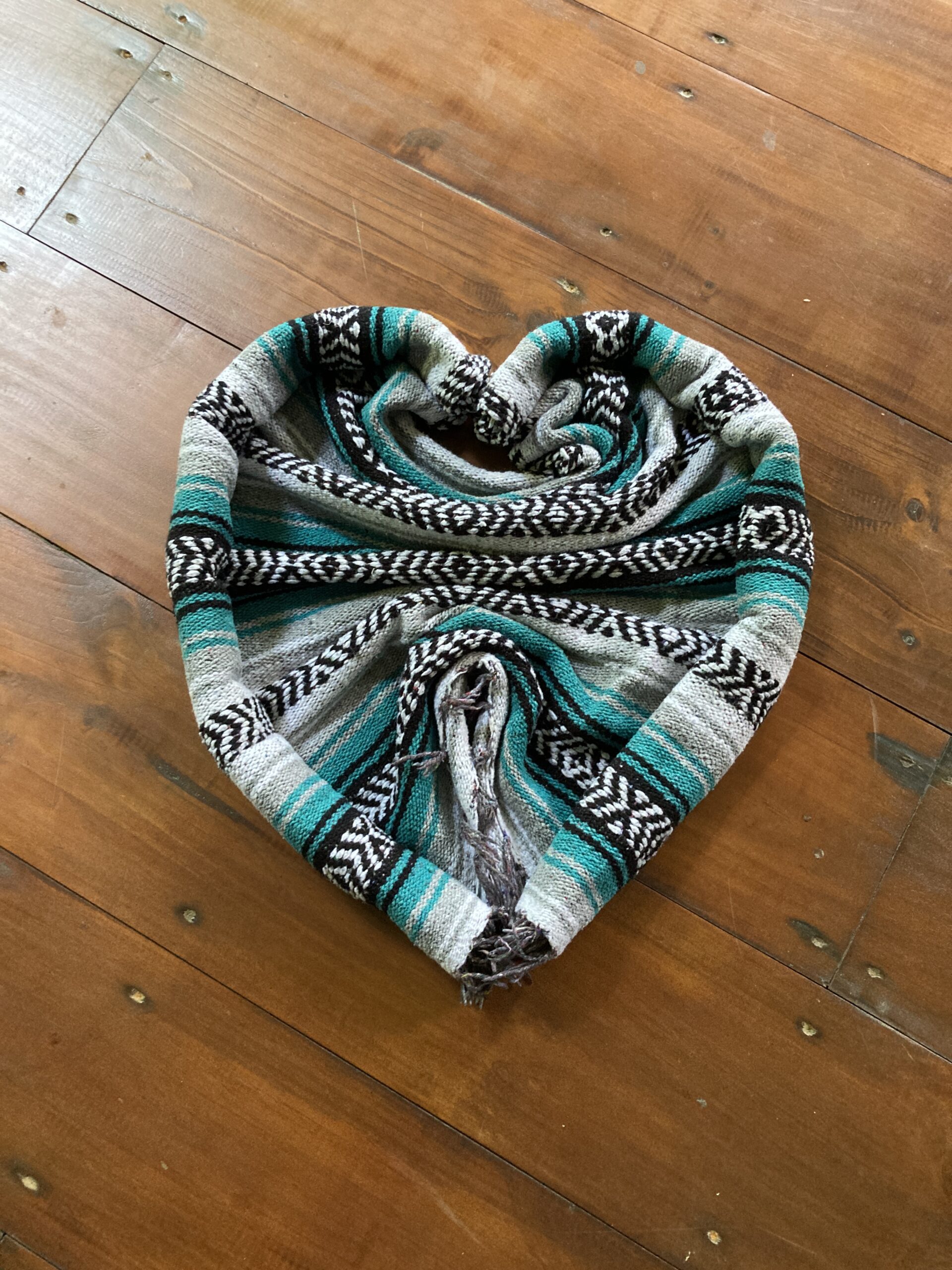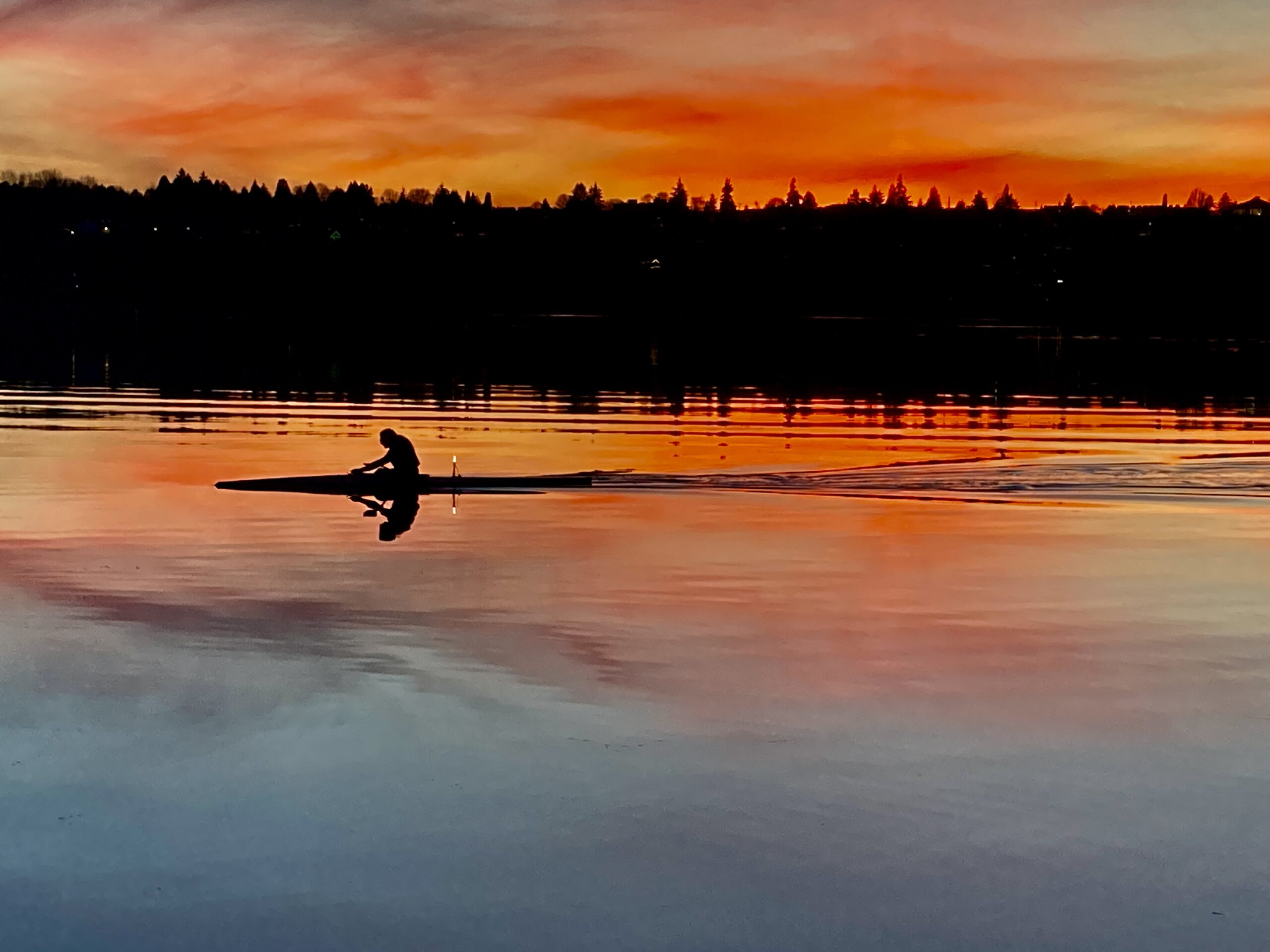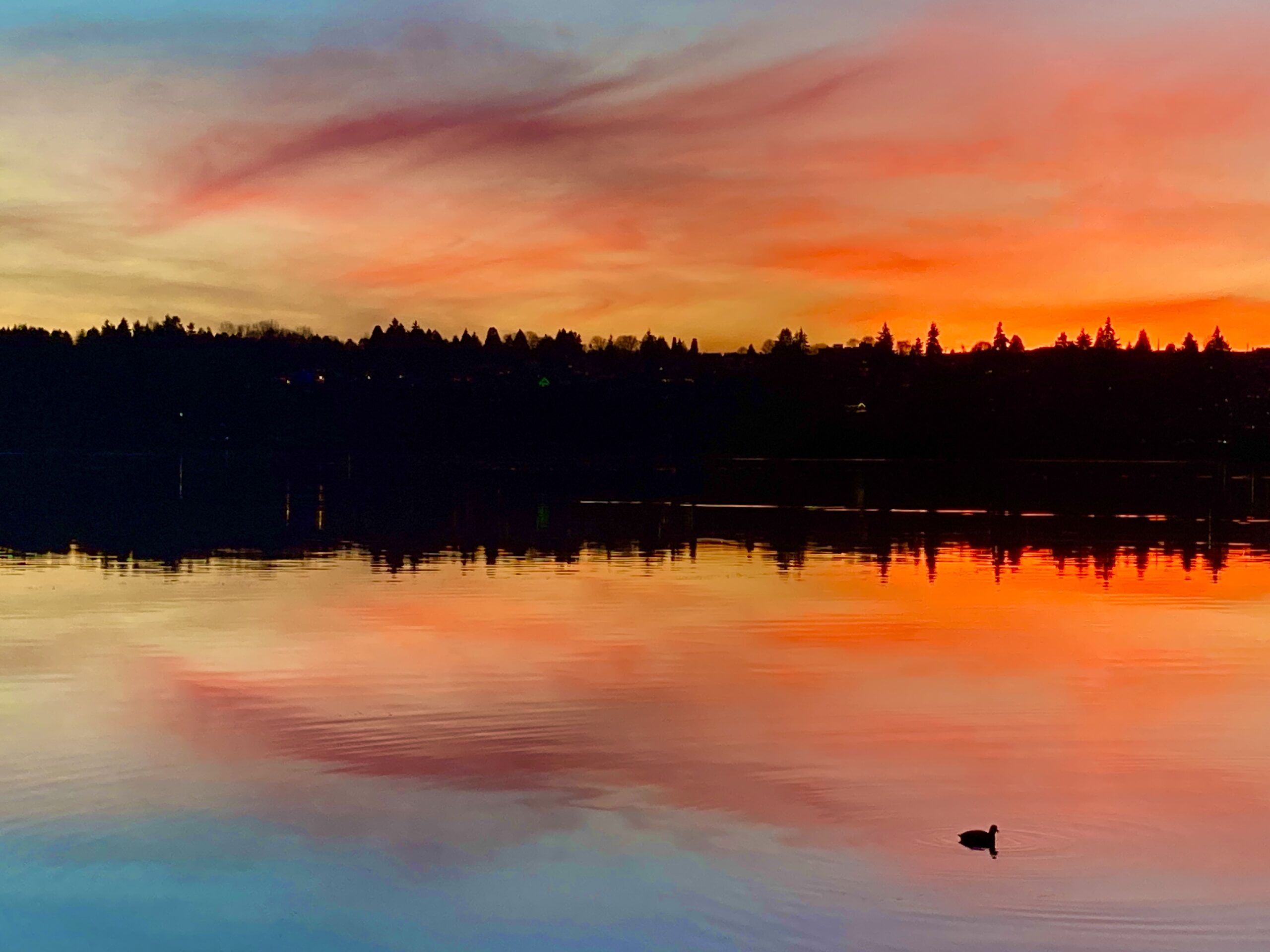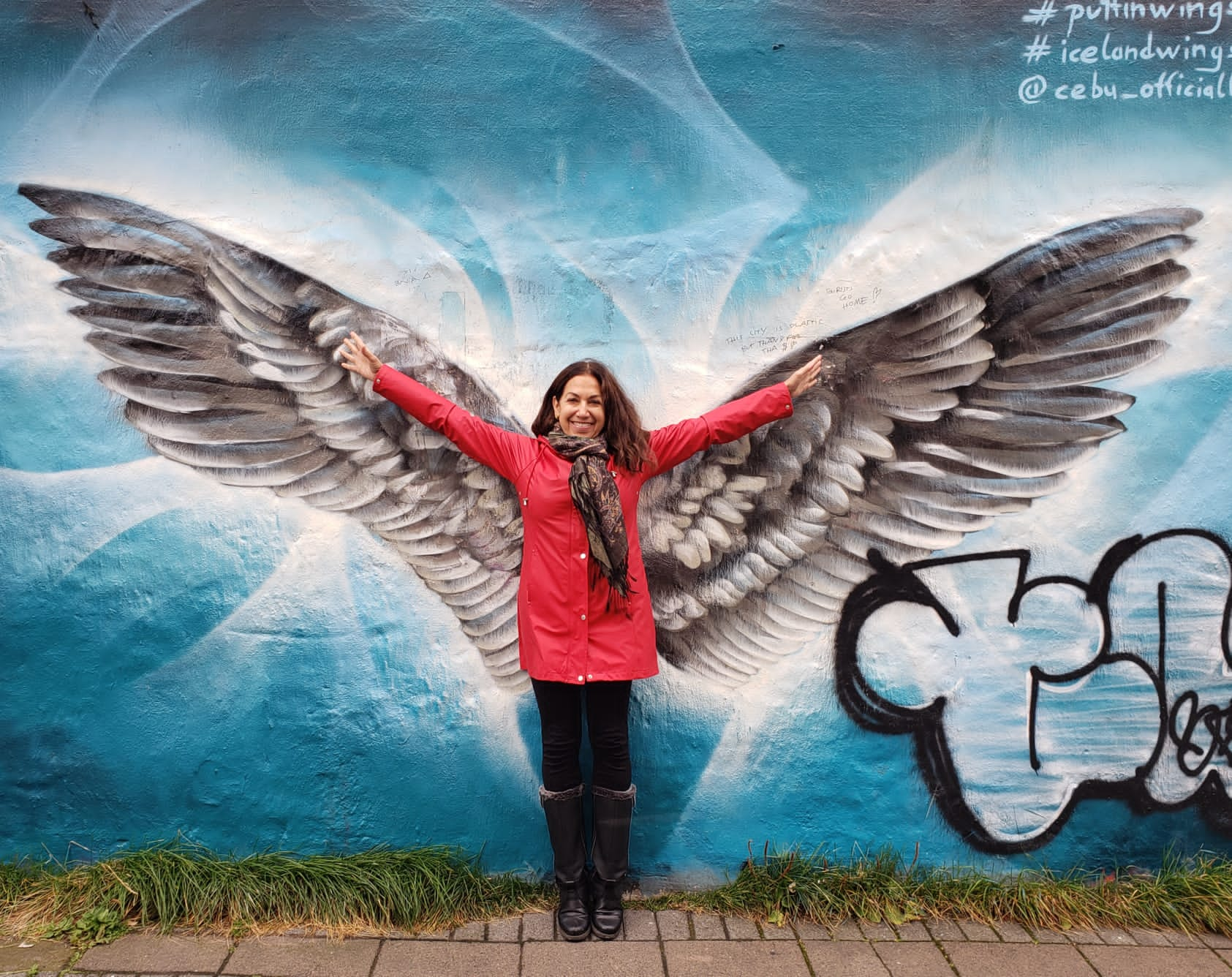On Sunday, September 29, I went hiking on the Kendall Katwalk with my friend Caron. The Kendall Katwalk Trail is very beautiful and last Sunday was no exception! I keep a log of all of my hikes and was trying to figure out the last time I was there. I was surprised to see that the last time I hiked the Kendall Katwalk was on October 2, 2011. In my memory, I felt like the hike I did back in 2011 was a late summer hike. But no! The 2011 hike was also an autumn hike. The photos posted on my blog from the October 2, 2011 hike look completely different from the photos I took on Sunday, September 29, 2019. The 2011 photos are filled with green trees and the sky is clear. You can see layers of mountains in those photos. The views were very clear. My hike this past Sunday was snowy, cold, and very wintry!
Winter came early to the mountains this year!
Below: photo of the Kendall Katwalk from October 2, 2011:

By contrast, the photos I took on Sunday are snow-filled. As we gained in elevation, the snow became deeper. A thick fog had set in and it was hard to see the forest and the glorious views.
Photo from the Kendall Katwalk from last Sunday, September 29, 2019:

The going was slower because, really, who wants to slip on snow and dive down the steep slope to one’s death? The weather was much colder than I expected, but as long as we kept moving, I was able to keep warm. I was wearing my gloves and hat, but wish I had packed a heavier pair of gloves and I really wish I had packed my yak-trax, which -for those of you who may not know- are slip on traction coils placed over boots to keep from slipping.
After we stopped to have lunch, my hands got really cold. I was trying to get my hand warmers out, but my hands were so cold that even unzipping my backpack was difficult. The cold made my fingers clumsy. Caron saw me struggling and must have heard me muttering on about how frozen my hands were and she lent me her spare pair of heavier gloves she had in her pack. With the heavier gloves on, my hands warmed up quickly. Caron also let me use one of her spikes so I could feel more sure-footed! The one spike, which was placed under one of my boots, took the place of my missing skid-proof yak-trax. (Note to self: Carry a spare pair of warm gloves on Autumn hikes and just stick the foot traction devices in your bag, too. Got that, Fran?)
I’d say the temperature was at a freezing point the whole time we were up near the ridge. As long as we kept moving, I was able to stay warm. The experience of being up at the ridge was thrilling.
We snuggled into the rock wall just off the trail to eat lunch. The rock was surprisingly warm and sheltering. Strange to say, but leaning up against the rock was like leaning against human warmth:

My body must have been very confused. Last week, I was in the midst of a heat wave in Sicily and then, not even one week later, I was in the snowy mountains of Washington State.

Kendall Katwalk is Caron’s favorite hike. It may very well be one of my favorite hikes, too. The name is so interesting, too. A catwalk is a ramp, or a fashion runway used by models to show off the latest clothing designs during a fashion show. I looked up the word as I am intrigued by it. Is is a modern word, an old word? Below is what I found:
What is the origin of the term ‘catwalk’? According to the Online Etymology Dictionary, “catwalk” dates from 1885, meaning a “long, narrow footway,” in reference to a narrow passage that one has to cross carefully, as a cat walks. … It was applied to fashion show runways by 1942.
And the Kendall Katwalk has a section of trail that is a long, narrow foot-way. That part of the trail was blasted out of the side of the cliff. It is not a trail for those who fear heights! But if you fear not, the trail is fantastic and thrilling to be on! (Even more thrilling when covered with fresh snowfall.)
Kendall Katwalk is a 150 yard long narrow pathway blasted out of a steeply sloped granite rock face on the north ridge of Kendall Peak, approximately 3 miles northeast of Snoqualmie Pass. It is a segment of Section J of Pacific Crest Trail and the construction was completed in 1979. It is a popular destination for day hikers, trail runners, and backpackers.

At the most narrow part of the Katwalk, where normally one would have splendid views, we had fog:

But in other areas which were lower in altitude, we had views of the forest:

The hike is in and back out on the same trail. At the lower elevations, there was not much snow at all:

Another element to Sunday’s hiking experience was meeting a number of “thru-hikers”! The trail is part of the Pacific Crest Trail (PCT) and the thru-hikers are the backpackers who tackle the entire 2,650 miles (4,265 km) without dying! The thru-hikers start from the Mexican border in April and end at the Canadian border in September. Used to be that only a few hundred backpackers actually completed the entire PCT, but with the popularity of the novel Wild: From Lost to Found on the Pacific Crest Trail by Cheryl Strayed, the trail has become wildly popular.
More people than ever are attempting to complete the entire trail! Last year, some 700-800 backpackers attempted to complete the trail, and about 60% actually finished. In order to finish within the reasonably safe hiking months, the hikers have to hike some 17 – 20 miles per day. They also have to build in rest days. Most of the thru-hikers we met on Sunday were Millennials.
The first person we talked to last Sunday was a guy named Panda. He had calves as thick as my thighs. And he was sweet as can be, kind of like a Teddy Bear. He was pounding the trail, determined to make it to the Canadian border finish line! I was thoroughly impressed. He actually slowed down for about five minutes to chat with us!
After our chat with Panda, we met another thru-hiker excited to reach the finish line at the Canadian border. His name was Monarch. And later we chatted with another thru-hiker named Tank. I’m not sure how Monarch got his name, but Tank actually looked like a tank.
So obviously, if you want to be a thru-hiker, you need a TRAIL NAME! The whole concept of having a trail name is an interesting one. At one point, before Panda hurried his pace again, Caron asked, “So Panda, what’s your real name?” He proudly answered, “Panda!” That’s my name!”
So you see, your trail name is the name you take on to be reborn with on the trail.
Thru-hikers do not answer to the arbitrary labels bestowed upon them at their birth without their input or consent. The subtle power exerted by your parent(s) or guardian(s) over you during the course of your life holds no weight on the trail. The trail is a place of freedom and liberation from the shackles of societal norms. The trail is a place for you to find yourself, to become Hummingbird, to become Bearclaw, to become Appa, to become Moist.
There are many rules and strict guidelines that come with choosing a trail name. The one I find most interesting is that only one given trail name is permitted per year per trail. In other words, there is only one Panda, one Monarch, and one Tank in 2019! The process is not easy: There is an application process and the trail name has to be submitted as an Official Trail Name Request.
I found lots of information about obtaining an official Trail Name for the PCT. If it is of interest to you, scan some of the items below. I only include it because I find it fascinating that it’s really a big deal to have a trail name. (Below, I was impressed that the person submitting the application, must write “Trail Name Application” in cursive! And I didn’t know “deservingness” was an actual word:
-
A hand-written statement (no fewer than 1,000 words) explaining why your proposed trail name suits you specifically and how you intend to express yourself via said name whilst hiking the trail.A 4 x 6 in (102 x 152 mm) photograph of yourself in your intended hiking outfit and with your (fully loaded) pack.A US-letter sized (8.5 x 11 in) sheet of paper with the names and phone numbers of five friends whom can be contacted should there be any question as to the deservingness of your trail name. A completed trail name application form.You are required to sign the letter and the reverse side of the photograph. Trail name applications should be submitted to the Pacific Crest Trail Association (PCTA). Please write “TRAIL NAME APPLICATION” in cursive on the back of your submission’s envelope using a “National Park Blue” colored glitter pen.
- During the course of a thru-hike, if you are asked your name, you respond with your trail name. This includes, but is not limited to, fellow thru-hikers, day hikers, and people you may come across in town during a break or resupply.
Trail names are non-transferable and immutable, if you wish to make any changes to your trail name, you must submit a Trail Name Alteration Request.
Tattooing your trail name on yourself without submitting a Request For Permanent Stay will result in the invalidation of your trail name.
Should a hiker’s trail name be found unsuitable by their fellow thru-hikers, a Petition for Trail Name Revocation may be submitted if signed by at least five other trail name holders hiking the same trail during the same calendar year as the trail name holder in question.
Finally, a word of warning to you would-be rule breakers. If you are found to be using an unsanctioned trail name and are reported by no fewer than three other hikers, your Pacific Crest Trail Permit (and, in extreme cases, your Entry To Canada Permit) may be permanently revoked.It might seem like a lot, but applying for, receiving, and using a trail name really is that complicated. Once you’re out on the trail things generally fall into place and strict adherence to the sometimes convoluted Trail Name Code of Ethics quickly becomes second nature.
This is it, my readers. I encourage you to experience the Kendall Katwalk in the summer months only if you are physically able to do so. Be sure you are familiar with the altitude gain and the trail distance. It’s not a trail for beginners and is rated ‘Most Difficult” in my hiking guide book. And if you are on the trail and see a thru-hiker, ask for his or her name.







What a wonderful story Fran thank you! Thanks for the info about the PCT and the trail names how interesting, who knew!! Love to you and Rick! XO
Great story Fran. Thanks for the info about trail names. My cousin and his wife are hiking the Canino de Santiago. I’ll ask them if they encountered hikers in Europe with trail names.
Hugs, Jeanne
I’m guessing that the trail names apply only to the PCT. I’d love to do the Camino one day. I understand that it’s very accessible and crowded, but still, I’m sure it’s another great experience.
Thanks for bringing us your beautifully written and photographed hike, Fran. Your writing and choices took me all the way, no skipping over any of it. I especially like the mix of the personal with obscure rules in the wilderness. While beyond me, I’m glad to know the catwalk is out there, another trekking trail for many.
What a wonderful blog, Fran. I never knew anything about trail names but have a nephew and niece who “did” the Appalachian Trail a couple of years ago and would blog along the way with the people they met and their trail names. His name was Santa and he looked just like the “real” Santa. Wonderful pictures–makes me want to be 20 years younger so I could do this trail again. Love, Ginger
How cool that your nephew did the AT as it is called. I read on the REI site that the Appalachian Trail is tougher than the PCT because the trail isn’t as well maintained. Rick did part of the PCT in the 70s. I know you have done much hiking and cycling over the years!! You are amazing. As for the PCT, I think I’d rather just do segments. That is enough for me! Love, Fran